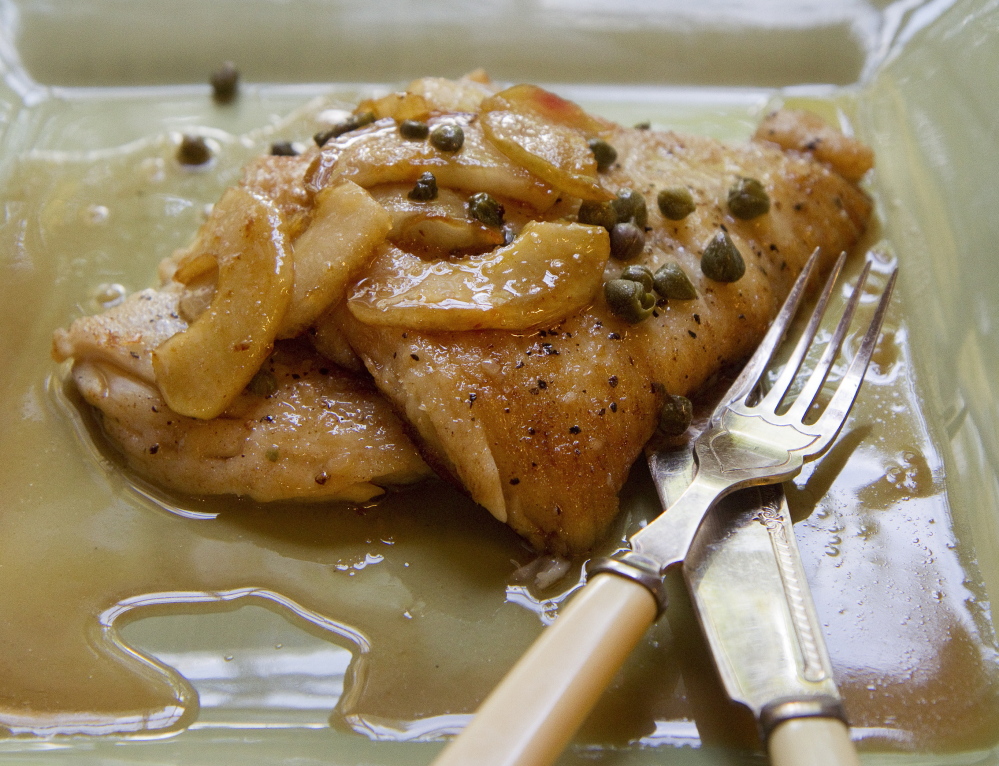Monterey Bay Aquarium’s Seafood Watch is a trusted source for guiding eaters through the challenging waters of sustainable seafood. It tracks scientific research on the health of fish stocks and fishing practices around the world, and provides color-coded regional guides to consumers for which species are best to eat from a sustainability standpoint.
Green for a “best choice” means a certain kind of fish is a good choice at any time; yellow indicates it’s a “good alternative” in moderation; and red means “avoid” eating it altogether.
Seafood Watch ratings change based on the efficacy of fishery management measures; warming climates and acidifying seas; and advances in environmentally friendly fishing technologies. In its most recent update released last month, winter skate harvested in the Atlantic Ocean via bottom trawling devices was upgraded from “avoid” to “good alternative.”
Skate are kite-shaped, cartilaginous, flat fish with long tails. Think stingray. You eat only the wings, which you are likeliest to encounter at higher-end restaurants, often as a special. Home cooks can find skinned skate for $7.99/pound pretty much year-round at Harbor Fish Market in Portland. (Removing a skate’s tough, thorny skin is a task best left to fishmongers.)
Skate can be poached, pan fried or baked quickly in roughly the same time frame as local cod. The flesh peels away from the wing’s cartilage in long strands, so that when it’s cooked it looks more like a fan than a fish. Though it spends its life in the sea, skate has a slightly earthy flavor.
According to James Benson, Sustainable Seafood Project manager at Gulf of Maine Research Institute in Portland, winter skate is the primary species of skate harvested for eating in the Gulf of Maine region. After a decline in the 1990s, the winter skate stock has increased significantly and is now fluctuating around the targeted level that managers use to determine the health and abundance of the population.
“You can feel pretty good about buying the skate you see at the fish market if it’s from the Gulf of Maine,” Benson said.
SKATE WITH APPLES AND CAPERS
This recipe comes from the “Harbor Fish Market” cookbook, a compilation of Maine seafood recipes by Nick, Rian and Kathleen Alfiero released last year. The extended Alfiero clan owns the market.
Serves 4
For the sauce:
4½ tablespoons salted butter
1 large shallot, finely diced
3 tablespoons brandy
¾ cup chicken stock
½ teaspoon salt
Black pepper, to taste
For the apples:
2½ tablespoons vegetable oil
1½ tablespoons salted butter
1½ apples, peeled, cored and sliced
2½ tablespoons brown sugar
Pinch of salt
For the skate:
2 tablespoons vegetable oil
1 tablespoon salted butter
Four 4- to 6-ounce skate fillets
Salt and pepper to taste
A handful of flour
1 lemon, halved
3 tablespoons capers
To make the sauce, heat a saucepan over high heat. Add 3 tablespoons of butter and swirl. Add shallot and lower heat to medium. Cook, stirring until the shallot is golden brown. Add the brandy and stock and bring to a boil. Cook until reduced by one third, and swirl in the remaining 1½ tablespoons of butter. Season with salt and pepper and keep warm.
To cook the apples, heat a large sauté pan over high heat and add the oil. As it begins to smoke, add butter and apples and sauté for 1 minute. Add sugar and cook until the fruit is caramelized, about 5 minutes. Remove to a warm plate and wipe the pan clean.
To cook the skate, add oil and butter to the pan. Season the skate with salt and pepper and dust with flour. When the oil and butter are starting to smoke in the pan, add the skate, with the whitest side of the skate hitting the pan first. Lower heat to medium high and cook until golden brown (3 to 4 minutes). Turn the skate, and finish cooking on the other side (3 to 4 minutes). Squeeze lemon juice over the fish. Sprinkle capers over fish.
To serve, pour the sauce in the center of a warm serving plate, and place the skate on top of the sauce. Top with apples.
Christine Burns Rudalevige is a food writer, recipe developer and tester, and cooking teacher in Brunswick. She writes about feeding her family Maine seafood at www.familyfish.net. Contact her at cburns1227@gmail.com.
Send questions/comments to the editors.



Comments are no longer available on this story